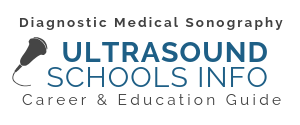Computed Tomography, better known as CT or CAT scans, is one of the tools that is used in the early detection of cancer. It is also used to provide information to the physician about other types of disease and injuries, including in emergency situations and prior to surgery. CT scans may be performed on many regions of the body including the brain, spine, teeth, abdomen/pelvis, colon, heart, neck and more.
What is Computed Tomography?
Computed tomography (CT), also known as computed axial tomography (CAT), is a non-invasive diagnostic procedure that uses X-rays (ionizing radiation) to capture images of internal portions of the body. A CT scan differs from more basic X-rays in that in takes cross-sectional images of organs, bones and other internal structures.
The computer employed as part of a computed tomography scan is able to generate extremely detailed, three-dimensional images of these structures. The purpose of CT is to diagnose or identify abnormalities or disease in order to help develop treatment plans; a CT scan can also determine whether that portion of the body is responding to treatment.
Radiologic technologists (sometimes referred to as CT technicians) specialize in computed tomography and perform scans on various parts of the body. Those who practice cone beam computed tomography (CBCT), for example, image the teeth and jaw for dental purposes. A CT on the abdominal region helps determine whether a patient is suffering from appendicitis, pancreatitis, liver cirrhosis and more. Head computed tomography scans can determine whether there is a blood clot, bleeding or a ruptured aneurysm inside the brain.
 CT scans are also effective in the emergency room when a diagnosis needs to be made quickly. In some cases, CT scans are performed in conjunction with PET (positron emission tomography) scans. Where CT scans image anatomical features, PET scans show chemical or metabolic activity. Combining the two scans is especially effective in determining the activity and presence of cancerous tumors.
CT scans are also effective in the emergency room when a diagnosis needs to be made quickly. In some cases, CT scans are performed in conjunction with PET (positron emission tomography) scans. Where CT scans image anatomical features, PET scans show chemical or metabolic activity. Combining the two scans is especially effective in determining the activity and presence of cancerous tumors.
A Career in Computed Tomography
A computed tomography certificate is available to certified radiology technicians who complete coursework in an accredited program. Most CT techs work in hospitals or imaging centers. They must be able to operate CT scanners efficiently and accurately while relying on their base knowledge of anatomy, physiology and pathology.
They must also be compassionate communicators as they prepare patients for procedures, explaining what will happen, and answering any questions the patients may have. After the CT scan, computed tomography technologists must perform image reconstruction and other post procedures. They also must effectively share their findings with the rest of the medical team.
CT Tech jobs
According to the Bureau of Labor Statistics, the job growth outlook for radiologic technologists (which includes stats for MRI and CT techs) is “faster than average” with a projection of 6% job growth by 2031. All salary and employment figures are based on a national average and may vary by location. The demand specifically for radiologic technologists specialized in computed tomography (computed tomography technologists) also shows positive demand as procedures continuously improve and are increasingly valued as part of medical practice.
CT Technologist School
Numerous computed tomography schools offer CT certificate programs for those who already have education and/or experience in radiologic technology. Generally these programs are one or two semesters long and provide coursework related to the operation of CT scanners and how they apply to anatomy, pathology and patient care. Program lengths may vary depending on specific program requirements.
Many schools offer the CT certificate program entirely online, though clinical practicums must be completed with local clinical partners. When researching computed tomography schools, look for a program that provides clinical experience and that makes you eligible to sit for ARRT’s CT certification exam.
CT coursework will most likely include some of the following:
- Computed tomography instruments and procedures
- Sectional Anatomy
- CT Procedures and Patient Care
- Neuropathophysiology
CT Educational/Certification Requirements
Those wishing to become a CT technologist must first complete an academic program in radiography, radiation therapy or nuclear medicine, and be certified by The American Registry for Radiologic Technologists (ARRT).
To be registered through the ARRT with computed tomography certification, you must already be registered with the organization’s Radiography Nuclear Medicine Technology or Radiation Therapy certification, which you can earn after completing a radiography, radiation therapy or nuclear medicine program. Candidates must also meet the ARRT’s clinical hour requirement specific to CT.
CT Tech Salary
The median annual salary for radiologic and cat scan techs was $65,140 in 2022. Those just entering the field can expect to earn up to about $50,000 per year, and techs at the top of the earning curve make over $100,000. Salary and employment figures are based on a national average and may vary by location.
The majority of CT technologists work in hospitals and imaging centers. Job growth is expected to be strong, with a 6% increase in employment expected by 2031.
Highest Paying States for CT and Radiologic Techs
Where you live and work has an impact on how much you earn. Below are the top paying states for cat scan and radiologic technologists. Current data provided by the BLS.
| State | 2022 Median Salary |
|---|---|
| National Median | $65,140 |
| California | $99,680 |
| Hawaii | $88,440 |
| Nevada | $84,330 |
| Oregon | $84,540 |
| Massachusetts | $85,800 |
History of Computed Tomography
The history of computed tomography begins with the discovery of X-rays by German physicist, Wilhelm Conrad Röentgen in 1895. A year later, Dr. Francis Henry Williams of Boston successfully completed the first chest X-ray.
Interestingly enough, the invention of the CT scanner was funded by EMI (Electrical and Musical Industries). When EMI signed the Beatles in 1962, they were able to provide some funding to Sir Godfrey N. Hounsfield, an electrical engineer who had been with the company since the 1950s. Hounsfield had the idea to create a computer system that would take X-rays at multiple angles to create cross-sectional images that could be combined.
EMI released the CT scanner and in 1972 the first real-world application occurred at a London, England hospital to examine a patient’s cerebral cyst. As a result, Hounsfield and another physicist, Allan MacLeod Cormack, won the Nobel Prize for Medicine in 1979.
Resources:
American Cancer Society
The American Registry of Radiologic Technologists (ARRT)
U.S. Bureau of Labor Statistics
The Mayo Clinic
Web MD

